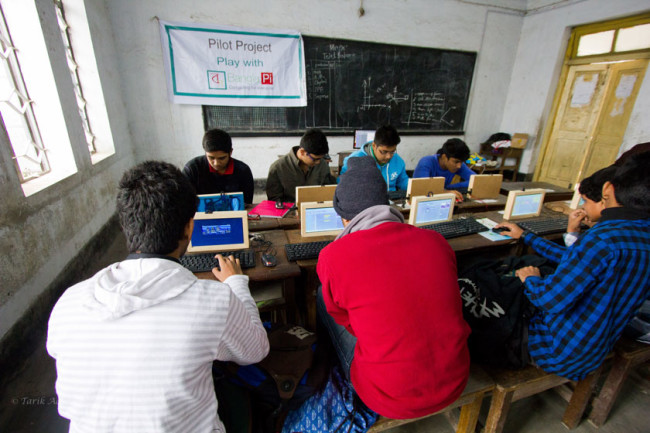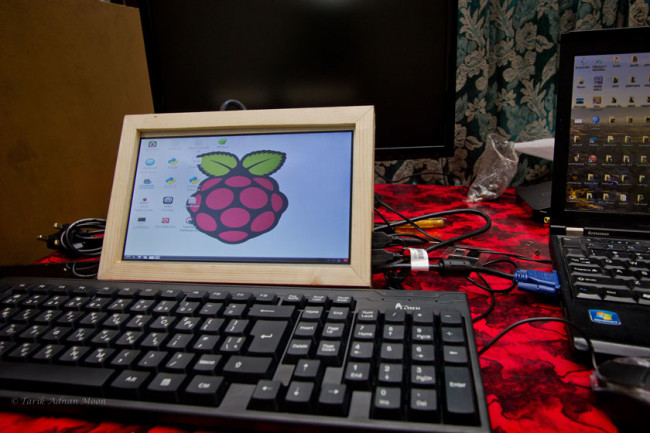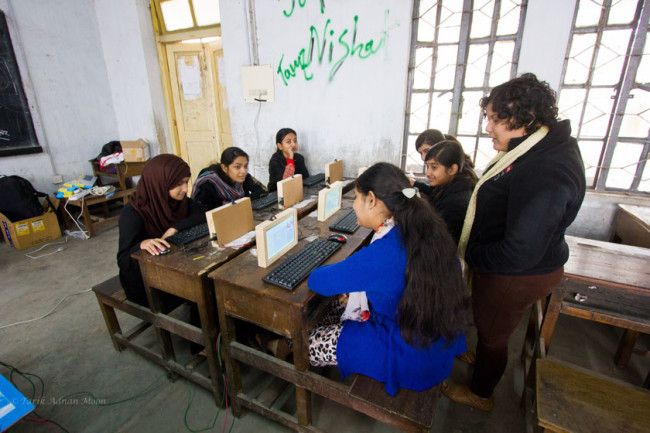It is ironic that similar to the way computers understand the world with compiled instructions in binaries (0s and 1s), they have divided the world into a binary group system– the group that knows how to use computers and the one that does not.
Most of the supporters of computer education these days start their pitch with teaching everyone coding and claiming that everyone will be computer scientists. While I would love that future, I feel that this pitch is coming from a first world perspective where most of the kids already owns an expensive computer and know about computers and smartphones from an early age. With this we are majorly discounting the rest of the world, where many kids have never seen computers.
Currently the world literacy rate is 84.1% (2013), but the digital literacy rate is much lower than that. With more and more computers being used every day from tasks as simples as writing emails or applying for jobs over internet to more complex tasks such as writing programs or using computers in factories, I don’t think I need to convince anyone that we need to teach young kids how to use computers. These basic computer skills are becoming as important as learning how to read and write. For that purpose we need computers accessible to all kids.
There is no doubt that the world needs more quality educational materials. Khan Academy clearly showed us how we can empower individual students if we just give them access to quality educational contents. The kids can learn themselves. Especially in many parts of the world getting a quality education is hard because of the lack of good teachers. While I don’t believe that MOOCs (online video lectures) can be as effective as direct classroom education and solve all of our problems, I believe augmenting classroom study contents could be a great use. For example, when a kid learns about history we can reinforce the learning experience with some multimedia contents. I believe flipped classroom model could be hugely successful if we can find a channel to deliver those contents to the students.
Finally I’d get back to the coding part. The kids who are already using computer for years, they should really learn to code or understand coding. They might not need to write thousands of lines of codes in future, but in this age of machine learning and massive automation, learning to code is going to be an invaluable skill for understanding the world. For example at Harvard, less than hundred students major in computer science every year, but this year 889 Harvard students took CS50, the legendary introduction to computer science class! This clearly shows why you should learn about computer science if you are already privileged to have computers.
The reason for this long and (hopefully) obvious discussion about the necessity of computers is that if we want to solve the problems of the world through better education, using computing devices is necessary. If I use the terms of Economics, computer is not a luxury good anymore– it is a necessity good for everyone. But with the average price of a good laptop being about a thousand dollar, buying computers might be a bit hard even for some people from the first world country. Now consider the countries like Bangladesh, where the average annual income per capita is 1044 USD, buying a computer for their kids is next to impossible for most of the families.
As a naive young college student, I have been thinking about this digital divide issues for a while. Last semester, when I was playing with a raspberry pi at my dorm at Harvard, I was thinking why we cannot just use these and some cheap LCD panels to make some small computers for the young students. For those who do not know what this is, Raspberry Pi is a computer board with 900 mhz (overcloked) CPU, 512MB ram, and 8 GB disk space. Basically this is equavalent to the computing power of a mid range smartphone or tablet. But do we really need that much computing power for teaching kids? It turns out–not really.
So I decided to do this over the winter break and got 15 raspberry pi boards and imported some cheap lcd panels from China (getting them cleared from customs was hard, but that is a story left for another day!). Then I scouted all over Dhaka to find cheap peripherals such as keyboards, mouse, and micro sd cards. With all these parts and many hours of labor (plus wooden frame made by the local photo frame makers), I finished assembling 15 devices and custom built a power supply system for all of them.
While assembling these was nontrivial, making the OS ready was another challenge. I have been working on using different flavors of debian for a while, but running the OS on the ARM chip is a bit hard given the resource constraints. So I had to do a bit of modification of the debian based raspbian OS and had to make sure we have everything in the Bangla Pi OS that I distributed with the 15 prototypes. The great thing is that you can do almost anything you can do with a typical computer. While this is does not have a lot of CPU power, so far they proved them to be adequate for most of the educational purposes.
So this winter I am running three pilot projects to see what we can do with these devices. We are running these workshops in three places. One in Dhaka (where all these kids have been using computers for years), another in Pakundia, a upozilla (sub-district) in Kishoregonj, and finally one in a small village of Sylhet. I am just trying to see how all these kids with very different computer literacy level interact with computers and how we can use these devices to improve education for them. I am teaching Python programming to the students in Dhaka and for the other students I would limit it to Scratch, which is a visual programming tool developed by MIT media lab.
It would be an understatement to say that organizing these has been just difficult. Thanks to my mom, and volunteers, who have been working tirelessly to help organize these workshops and create the curriculum. Also thanks to Harvard South Asia Institute for their winter grant that enabled me to do this project.
Currently the computers cost about $85 to make, but if we could mass produce them (at least couple of thousands), it is very possible to drive down to the cost with the new technology we have in R&D. This could be a great step toward making computers accessible for all. For the poor this could be a great first computer and for the privileged ones this could be a programming sandbox.
I believe that some people are better than others in some areas because of their inherent ability to excel in that. I also believe that these talented people are fairly randomly distributed regardless of geolocation or income level. So with affordable computing for everyone if we could get rid of the digital divide and make education a level playing field for the kids from the first world to those from the third world, we would be the best talents from all over the world to solve our important problem. Then we will be one step closer to having the world we all want to live in.









 Welcome to my blog on education, mathematics, travel, photography, and random stuff. You can find my posts in Bangla and English separately:
Welcome to my blog on education, mathematics, travel, photography, and random stuff. You can find my posts in Bangla and English separately:
3 Comments
Wow, Moon! A great initiative! Very proud of you.
Even $85 per computer is a huge step forward!
my heart goes out to you. all the very best. i am 100% sure that your efforts will trigger massive change. barring politics, all in our country is ripe for massive change.